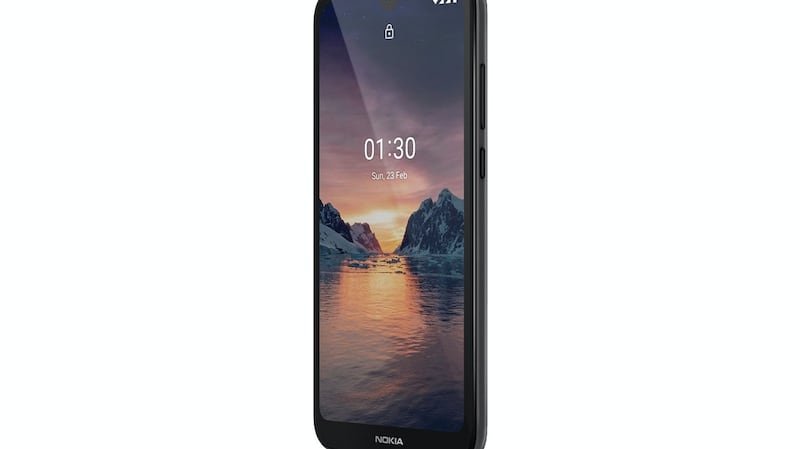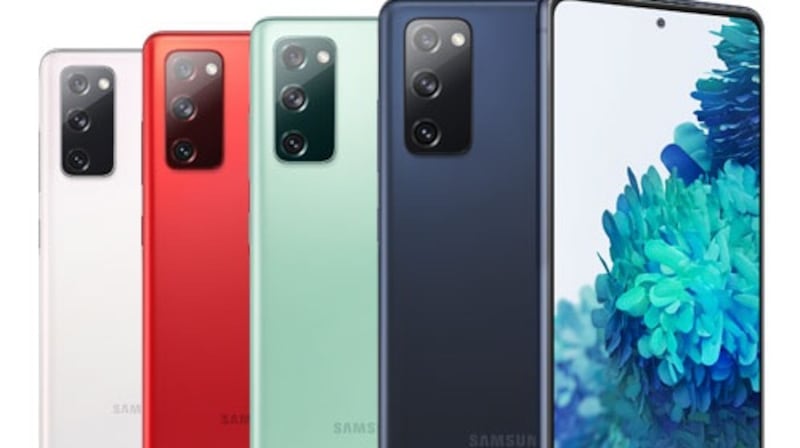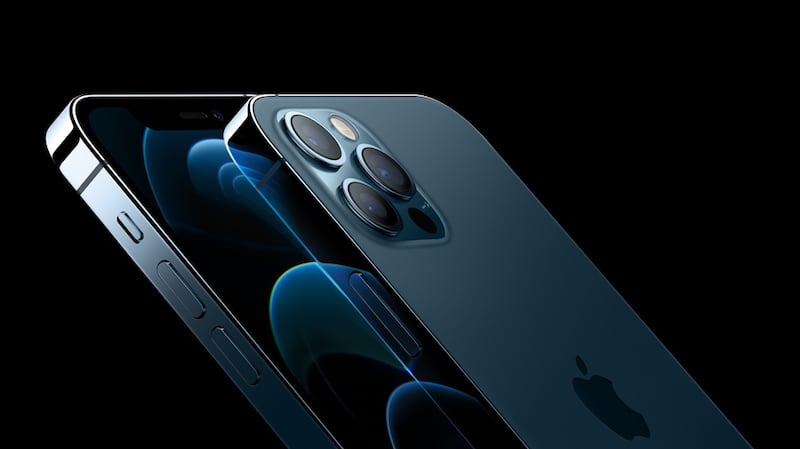Choosing a smartphone is difficult. There are so many options and they all offer similar features, meaning smartphone buyers have a tough choice on their hands.
Some things will narrow the choice, starting with are you Apple or Android? They have similar features these days, each operating system taking its cue from the other. If you are an Apple fan, for example, there are four different iPhone 12 models to choose from. If you are an Android user, the choice is significantly wider.
Camera quality is another factor. At the top end of the market, premium smartphones have shifted to triple and even quad cameras, offering telephoto and wide-angle lenses. At the cheaper end of the market, you will likely get a single lens rear camera.
But quantity isn’t everything. Manufacturers are also trying to do more with less, adding in more advanced features such as smart HDR (High Dynamic Range), or pro shooting and editing modes.
Your budget will also determine the type of screen you’ll get – quality rather than quantity – and the extras such as wireless charging.
At the lower end of the budget, the chips won’t be as high powered or as good at multitasking as the more expensive option, but they won’t be put under the same pressure either.
What about 5G? The Irish 5G infrastructure is being rolled out nationwide and, depending on which network you are with, you may have access. Most new smartphones being released in the coming months should be compatible with the new network.
While it’s not essential to most people now, it’s a good idea to future-proof your smartphone purchase for the coming year or so. The mobile industry moves fast; who wants to be left behind?
Budget friendly
Typically in the budget category, you’ll get a good (but not great) screen, and a decent camera, probably single lens. The case may not be metal and glass but it may mimic more high-end materials. And if you do drop and break it, chances are it won’t cost a chunk of a mortgage payment to fix.
There are plenty of bargains if you are looking for something cheap and cheerful. At the modest end of the market is the Nokia 1.3 (€89). At less than €100, you get a basic Android smartphone with a decent 8 megapixel rear camera and 1GB of Ram.

The version of Android on the device is Android 10, but it's Android Go, which is optimised for lower powered devices. Powered by the Qualcomm QM215 chip, it will run most things just fine, but can get a bit sluggish at times. In general though, at the price, it's a good budget choice. Storage is also small at 16GB, but you can add a MicroSD card to boost that.
The budget market is one that Huawei has done reasonably well in, and the Huawei P Smart (2021) is no exception. The P Smart is available for €130 with networks' pre-pay options, and comes with 128GB of storage space. Unlike some cheaper phones, it includes a quad rear camera with a 48 megapixel lens and an 8 megapixel depth camera. The front facing camera is also decent, with an 8 megapixel resolution. While it won't blow the competition away in terms of design, this is a solid phone, following some tried and tested design decisions.
But (and there is a but) you might have heard about the ongoing row between Huawei and the Trump administration in the US which has meant no access to Google services for the Chinese company. No Play Store, no Maps, no apps that rely of Google Mobile Services to run in the background.
Sure, you can try to get around that but when you are dealing with regularly updated software, it’s a level of effort most people won’t be bothered with. The P Smart is hit by this but, if you can live without Google, this is a solid phone.
Mid-range
The mid-range market has changed a lot in recent years. While you still make a couple of sacrifices to shave a few euro off the price, you get a lot more for your money than you might expect. The cameras may not be top-end triple cameras, but they often have dual lenses, offering regular and ultra wide-angle shots, along with some extras such as HDR.
If you want an iPhone for under €500, you have a couple of options: buy refurbished, buy an older model, or buy an iPhone SE (€491). The updated SE includes wireless charging, and is powered by the A13 Bionic chip, introduced with the iPhone 11 and 11 Pro. The camera is still a single-camera system, but Apple has upgraded it to a 12 megapixel f/1.8 aperture wide camera. You also get Smart HDR, and video comes with stereo audio recording and cinematic video stabilisation with 4K up to 60 frames per second on the rear camera. The redesign means Apple also killed off the headphone jack, getting rid of the last iPhone hold-out on that front.
Google has made a serious move on the mid-range market in recent months. The Pixel 4 5G (€491) is the latest in the brand's Pixel range. The 5G capability future-proofs the phone even if you don't want to use it now, plus you get a bigger screen at 6.1 inches. The new version of the 4a comes with a faster chip, a better camera and a bigger battery. It also adds a second camera to the rear set-up, with a main and an ultrawide camera.

There are other Android options though. The lighter version of Samsung's flagship smartphone, the Samsung Galaxy 20 FE – the FE stands for fan edition – was created in response to the pandemic. It takes out some of the pricier features but keeps the important ones. For €750, you get a 6.5 inch screen, the 120Hz refresh rate and a decent camera set up. What do you lose? Higher-end camera features – optical zoom tops out at 3x – and that curved screen with a Quad HD+ resolution. Neither are deal breakers, considering the S20 FE comes with a triple rear camera that has two 12 megapixel lenses and an 8 megapixel one, plus a 32 megapixel front-facing camera. It also keeps wireless charging and the wireless powershare feature that allows you to charge some of your other devices from its fairly hefty battery.
From one pandemic tale to another: the Nokia 8.3 (€470) has had an unlucky run of luck. The phone's launch was due to coincide with the new James Bond film No Time to Die, and the company had an entire marketing campaign built around it. The film had already been postponed from April this year, but had seemed set for launch a few weeks ago – only to be postponed again.
Still, that doesn’t take away from the Nokia’s 8.3 appeal. It is Nokia’s first 5G phone, and comes with a 6.8 inch display, a 64 megapixel main camera and a fingerprint sensor built into the power button.
Powered by a Qualcomm Snapdragon 765G chip, the device has 6GB of Ram and comes with two years of guaranteed software updates. The Nokia phones also come with Android One, a pure form of Android that cuts out the bloat. The camera is fine, but doesn’t perform quite as well as you would expect, given the specs. But it has some interesting editing features that can help make up for that.
If you are willing to take a chance on a newcomer, one of the newer entrants to the Irish market, the Oppo Reno 4 5G (€800) is a strong starting point for the company.
The design is appealing. The back of it is a gradient blue, which looks well and has a matte effect so it’s not as slippy as it could be. There’s a good chance you’ll actually manage to hold on to this phone, literally. It’s also less of a fingerprint magnet, and any minor scratches will be well hidden. On the front, you have a practically bezel-free 6.5 inch display that looks crisp, clear and is ideal for watching video.
Oppo also does well on the cameras. The rear facing camera has three lenses, with varying levels of magnification. There is an ultra wide-angle and macro lens in one, the regular wide-angle shot and a 2x zoom. You can push it as far as 5x, but the quality degrades significantly in lower light situations.
The selfie camera has numerous options for retouching your shots, from thinning out your face to smoothing your skin, shrinking your nose and giving you bigger eyes. Turn them all up to 100 per cent and you come out looking a little like an alien. But judicious use of the “beautification” tools may add something to your self-portraits.
The phone doesn’t have any extras such as wireless charging, but its not-inconsiderable charger can juice it up to a full charge in a surprisingly quick time. The other thing it lacks is expandable memory – you get 256GB and that’s it. Plus the phone isn’t officially IP rated, so keep it clear of water.
Flagship smartphones
If you have a bit more cash to splash, there are plenty of high-end smartphones that will happily part you from your money. The flagship smartphones come with all the extras you can think of.
It's hard to know where Google's Pixel 5 (€619) sits these days. Its price just edges the premium territory, but it has ditched a few of the super high-end features of the Pixel 4, including the motion sensing Project Soli chip. The 6-inch display is quite impressive though; almost edge to edge, with Google shrinking down those bezels to practically nothing.
The camera has had a few changes too. The 12 megapixel wide-angle lens remains, but Google has swapped out the telephoto lens for an ultra wide-angle lens.
On the inside, the Pixel 5 has 8GB of Ram and 128GB of storage. It has one flaw – there is no expandable storage space. Google gets around this with a subscription to Google One which gives extra cloud storage, but it will cost you after the trial period is up. Because it’s a Google phone, it is likely to get any software updates first, putting users in a better position not only on new features but also anything that upgrades the security of the phones.

You are spoilt for choice with iPhones this year. From the iPhone 12 Mini (€815.50) to the iPhone 12 Pro Max (€1,258), the only thing you need to decide is how much you are willing to spend for the company's latest handsets.
The iPhone Mini is aimed at those who want a smaller sized Apple device, with all the tech of its larger sibling. But most of the attention has been on the Pro models, which has the better cameras. The new Pro Max not only has a bigger screen and battery than the 12 Pro, but it also has a slightly better camera. Its optical zoom comes in at 5x optical zoom versus the 12 Pro’s 4x. The 12 Pro Max also has sensor-shift image stabilisation, a type of image stabilisation that is on the camera itself. It is designed to make the footage from your video camera almost professional camera quality.
It has plenty of competition on the camera front though. Huawei has made a name for itself in creating affordable smartphones with great cameras thanks to its partnership with Leica. The P40 Pro+ 5G (€1,100) is no different.
The camera, which combines a whopping five lenses, is probably among the best you’ll get on a smartphone. It combines a 50 megapixel wide-angle lens, a 40 megapixel ultrawide, an 8 megapixel zoom lens and a telephoto lens, with the fifth being a 3D depth-sensing camera. The selfie camera is 32 megapixels, with a depth sensing camera thrown in. The OLED screen is almost 6.6 inches, giving you plenty of space to line up those photos and video.
However, as good as the camera is, it is impossible to ignore the elephant in the room, namely that Google ban. The P40 Pro+ has no access to Google’s services.
When it comes to flagships, Samsung is covering its bases with both the Galaxy S20 and the Note 20 Ultra. The latter has been Samsung's super-sized option for business users for a long time, but in recent years it has widened its appeal. The Note 20 Ultra cemented that. It has a huge display – 6.9 inches – that is capable of wide quad HD resolution. On the inside, the phone comes with 256GB of storage space, and 12GB of Ram.
The camera also lives up to expectations: a 10 megapixel front-facing camera and a triple camera set-up on the back that comprises 108 megapixel, 12 megapixel and 12 megapixel. Optical zoom-wise, you get 5x magnification. Plus it has the S Pen, which while not essential is certainly a useful thing to have when you need it. It comes with a huge price tag though – €1,349.













